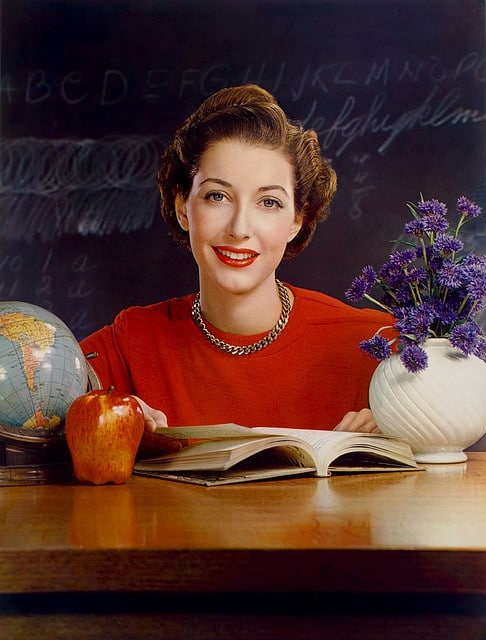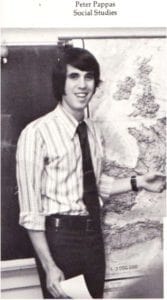
CLASS 1 OVERVIEW
As an ice breaker, I’ll give students an activity to design a great history teacher- a variation of “Tool 13: Brainstorm, Group, Label” from my Literacy Strategies Tool Kit (free PDF)
- Ask them to brainstorm all the words or phrases they can associate with “a great history teacher.”
- Give them Post-Its and asked them to write one associated word or phrase on each sheet.
- Put them in groups and ask them to share their Post-its and thinking. Then design an illustration that captured their collective thinking. And be prepared to share that with the class.
- Working in fours synthesize their individual brainstorming into a collective vision on large paper, then take turns sharing and responding to questions.
I’m giving my students a copy of my 1971 student teaching evaluation (2 page pdf) Quite a relic – Why did I save it? We’ll examine it as an historic document with a critical eye for answering a number of questions: Who created it and why? Historic context? Point-of-view? What could we learn from it? What other sources might we need to collaborate?
We will explore what it tells us about NYS teacher preparation programs in 1971.
ASSIGNment FOR CLASS 2:
Read
- Snapshot of a Modern Learner Mike Fisher in SmartBlog on Education
- The Reflective Student: A Taxonomy of Reflection (Part 2) Peter Pappas in Copy / Paste
Think about “Santos” from Snapshot of a Modern Learner
- What do you know about him?
- How does he best learn?
- How should he be taught?
Reflect about yourself as a learner. Use the same 3 prompts we used with Santos. Create a brief “selfie” of yourself as a learner that you can share with a classmate in our next session.
- It does not need to use an edtech perspective (as Santos’s snapshot did), unless that’s how you learn.
- It’s not actually a selfie. But, like Santos – it’s a Snapshot of a Learner – You
- It can take any form you choose – written narrative, cartoon, diagram, Powerpoint, Webcam video, Pinterest. (it doesn’t have to be digital). Think about “Reflective reading” above. That’s why I’m letting you choose the product format.
- It should be something you can share with a classmate at our next class. Key point to consider – Will make sense to someone else without you having to explain it?
In class 2 you will share your “learner selfie” and we’ll take it from there.
Based on edTPA
HSS2: How does the candidate use knowledge of his/her students to target support for students to develop understandings of facts, concepts, and interpretations or analyses to build arguments about historical events, a topic/theme, or social studies phenomenon?
HSS3: How does the candidate use knowledge of his/her students to justify instructional plans?
Image credit: George Eastman House
Timken Roller Bearing Co., calendar, September 1950, teacher at desk
Accession Number: 1976:0240:0019
Maker: Victor Keppler (1904-1987)
Date: Dec-1948

